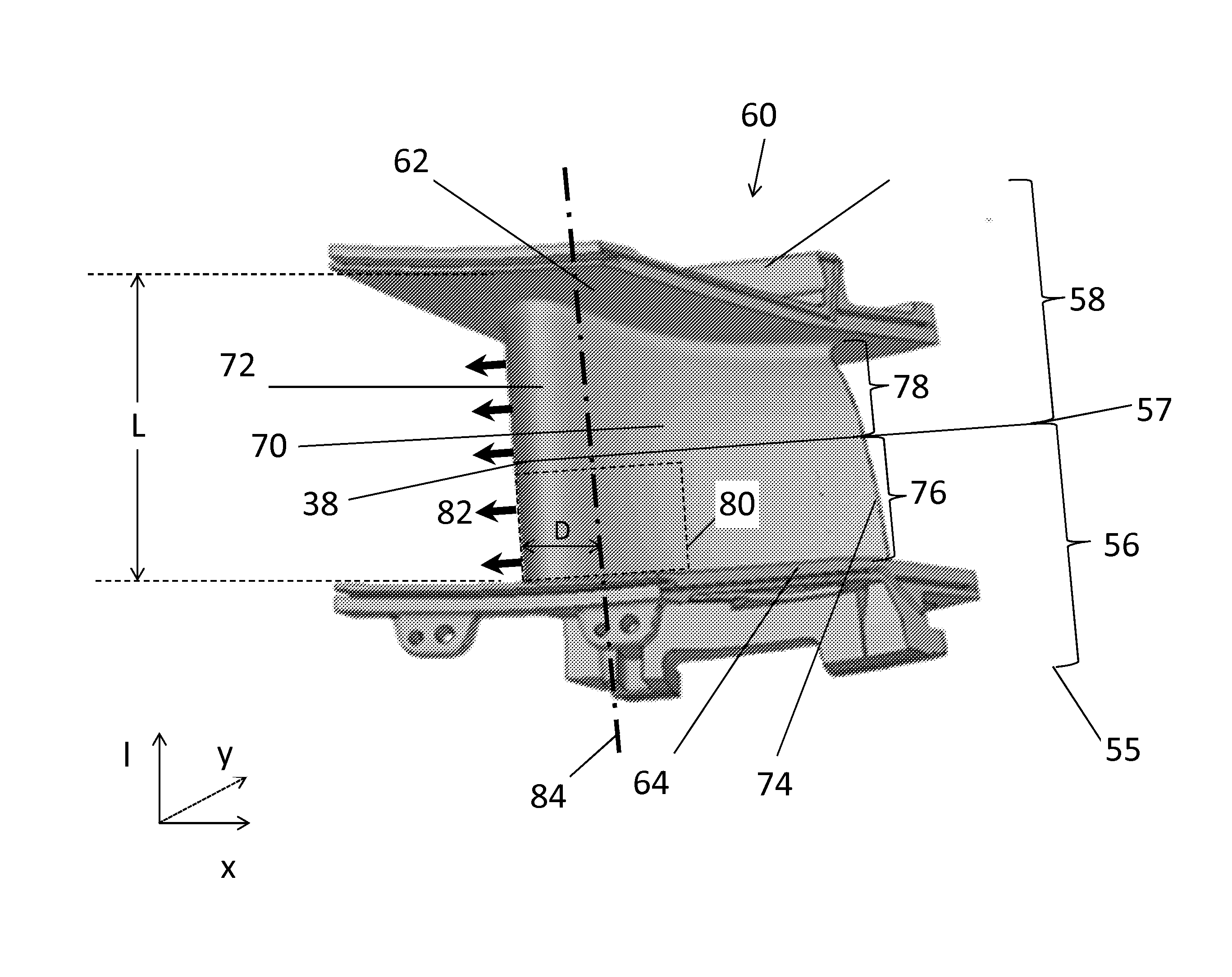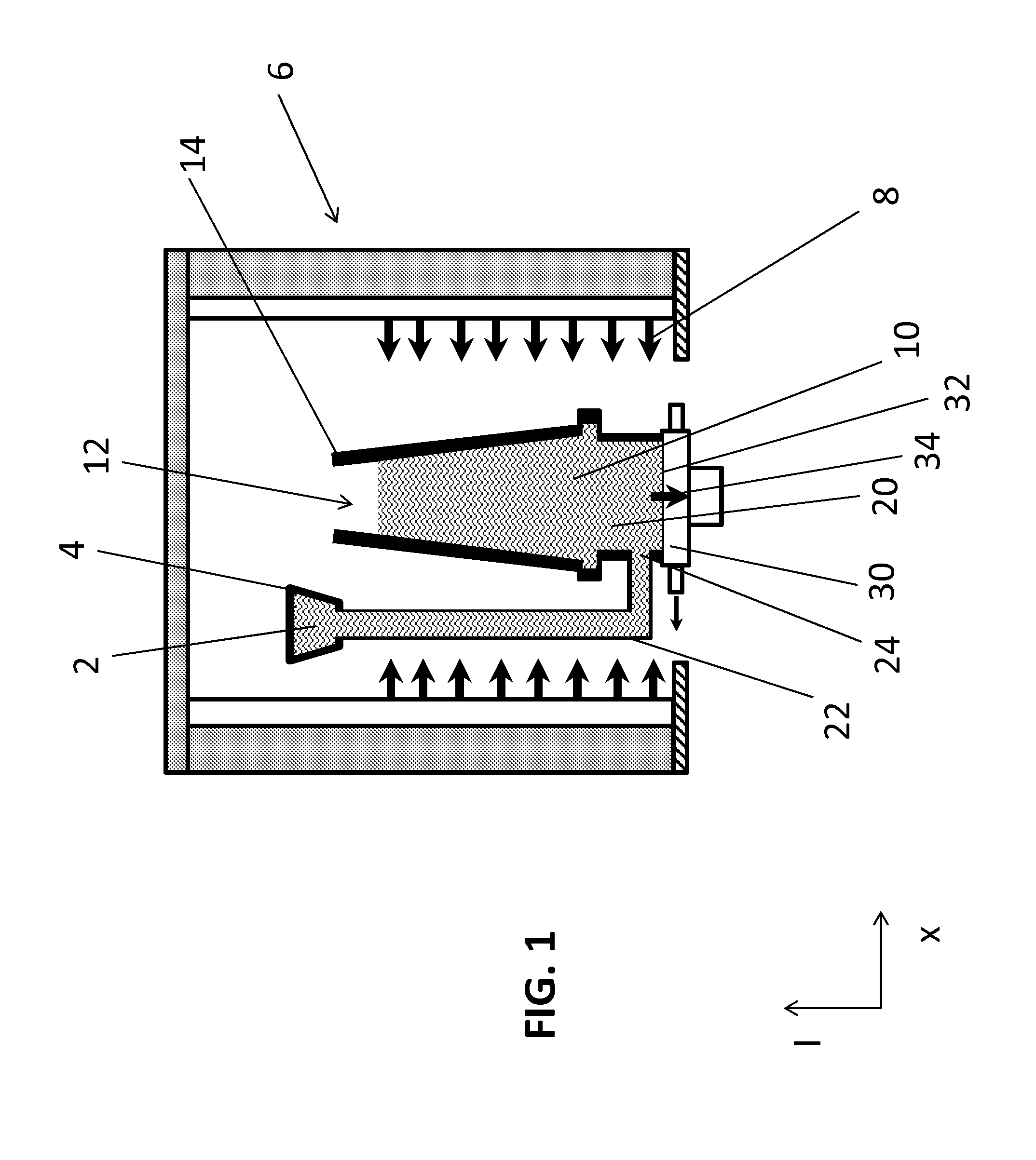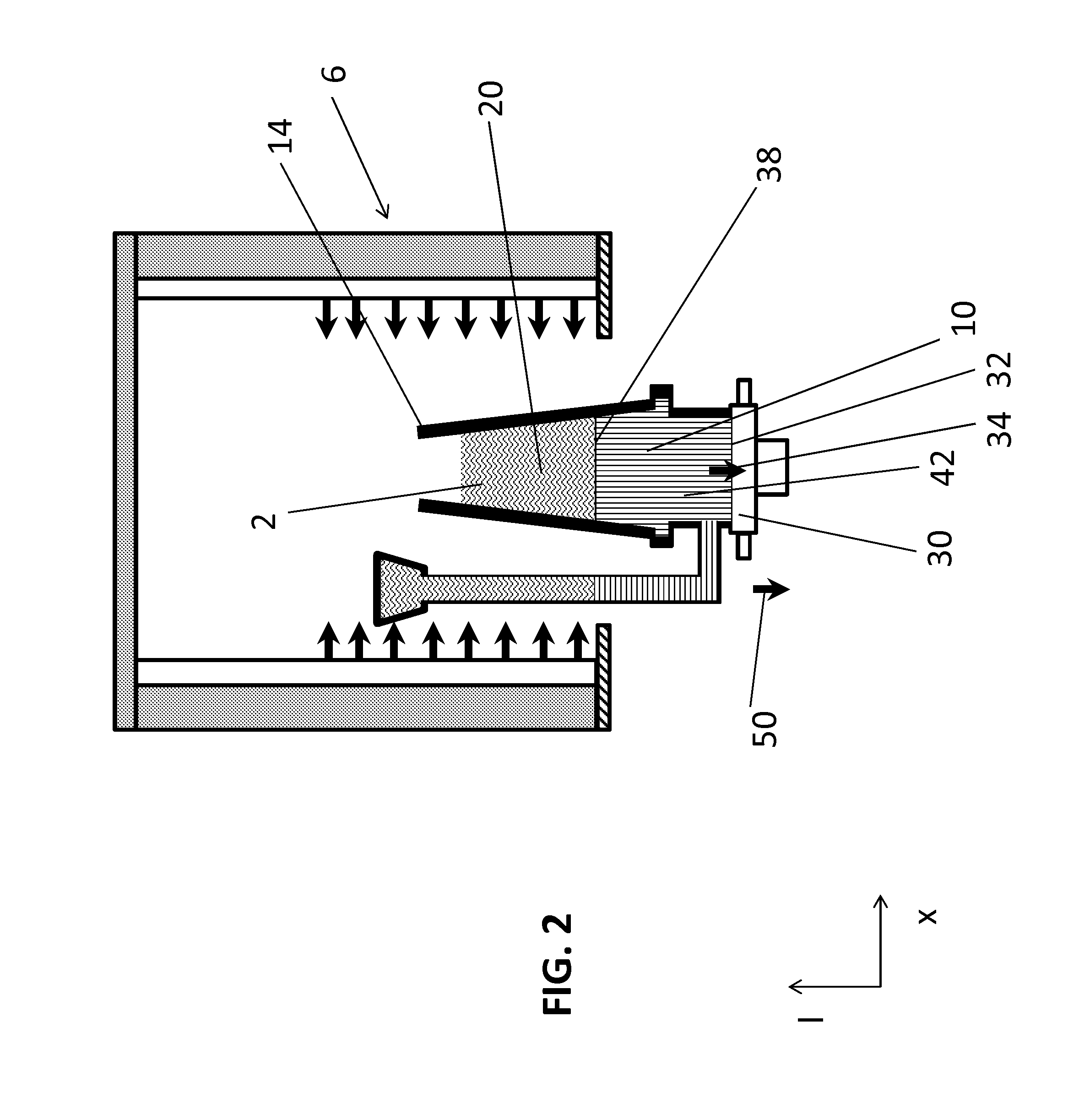Article for use in high stress environments having multiple grain structures
- Summary
- Abstract
- Description
- Claims
- Application Information
AI Technical Summary
Benefits of technology
Problems solved by technology
Method used
Image
Examples
embodiment 1
[0054] A method of forming an article comprising: heating a metal to form a molten metal having a metal temperature; heating a mold to a mold temperature greater than or equal to the metal temperature; introducing the molten metal to the mold; cooling a first portion of the molten metal while maintaining a second portion of the molten metal at the metal temperature, wherein the first portion has a first side and a second side, wherein the second side is opposite the first side and adjacent to the second portion, and wherein the cooling comprises progressively cooling the first portion from the first side to the second side such that a solidification interface progresses from the first side to the second side; and cooling the remainder of the molten metal from multiple directions after the first portion is cooled to less than or equal to a crystallization temperature.
[0055]Embodiment 2: The method of Embodiment 1, wherein cooling the remainder of the molten metal further comprises co...
embodiment 3
[0056] The method of any of Embodiments 1-2, wherein a volume of the first portion is greater than or equal 20% of a total volume of the article.
embodiment 4
[0057] The method of any of Embodiments 1-3, comprising determining a higher stress area of the article.
PUM
| Property | Measurement | Unit |
|---|---|---|
| Fraction | aaaaa | aaaaa |
| Percent by mass | aaaaa | aaaaa |
| Percent by mass | aaaaa | aaaaa |
Abstract
Description
Claims
Application Information
 Login to View More
Login to View More - R&D Engineer
- R&D Manager
- IP Professional
- Industry Leading Data Capabilities
- Powerful AI technology
- Patent DNA Extraction
Browse by: Latest US Patents, China's latest patents, Technical Efficacy Thesaurus, Application Domain, Technology Topic, Popular Technical Reports.
© 2024 PatSnap. All rights reserved.Legal|Privacy policy|Modern Slavery Act Transparency Statement|Sitemap|About US| Contact US: help@patsnap.com










